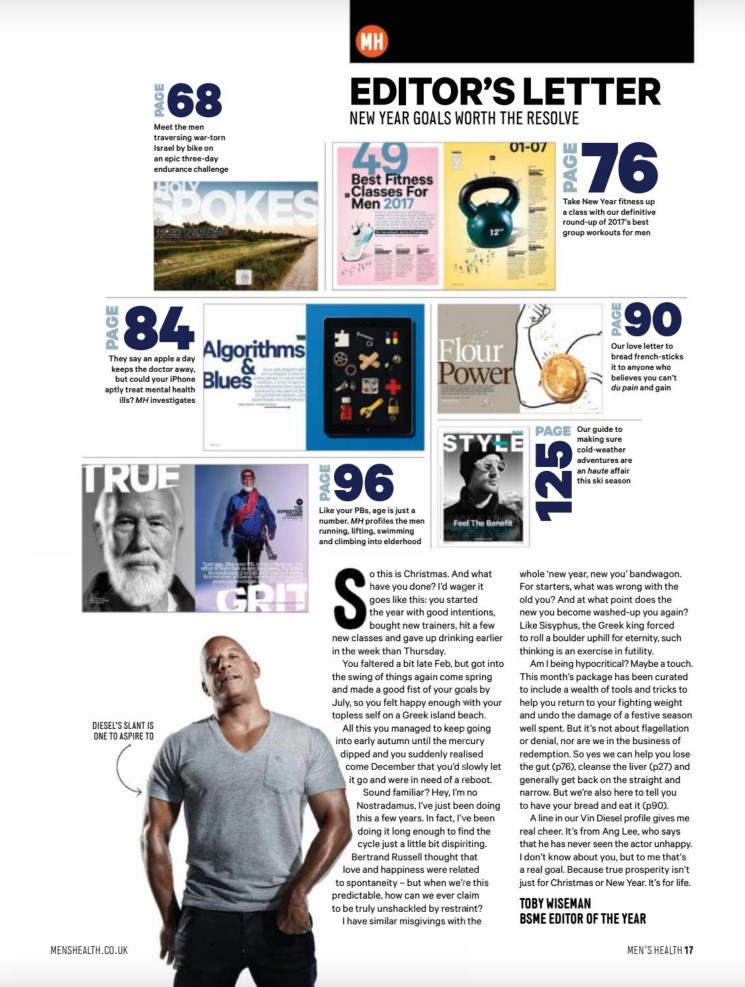
Semiotics
Dominant Signifier – (iconic) Vin Diesel
Print Language
Narrative
Genre
“The genre may be considered as a practical device for helping any mass medium to produce consistently and efficiently and to relate its production to the expectations of its customers.” – Dennis McQuail
genre is lifestyle magazine (aimed at men’s lifestyle) – all paradigm of signs which connote to the idea of manliness/masculinity – fulfilling genre expectations according to Neale ( genre is structured around a repertoire of elements, which attracts audience based on their predictable expectations)
Representation – (reactionary) muscular, heterosexual male with a dominant stance


The School of Life video: How to be a Man, presents the ‘cool man’ and the ‘warm man’. This links to Gauntlett’s notion that identity is fluid and negotiated. Although this is not a theory, we can see examples of the ‘cool man’ and the ‘warm man’ in Men’s Health.
For instance, on page
Lasswell’s Model of Communications
WHO?
Hearst Communications (Steven R. Swartz – C.E.O.)
Men’s Health (Richard Dorment – Chief Editor)
SAYS WHAT?
IN WHICH CHANNEL?
print (lifestyle magazine)
digital (websites, social media)
TO WHOM?
“active, successful, professional men who want greater control over their physical, mental and emotional lives”
WITH WHAT EFFECT?
Lazarsfeld’s Two-Step Flow Theory
Vin Diesel is an ‘opinion leader’ who people will actively choose to follow and listen to. By being situated on the front cover of Men’s Health, he influences his ‘opinion followers’ to read the magazine.

Uses and Gratifications
PERSONAL NEEDS
Understanding Self
Enjoyment
Escapism
SOCIAL NEEDS
Knowledge About The World
Self Confidence, Stability, Self Esteem
Strengthen Connections With Family
Strengthen Connections With Friends
Stuart Hall’s Theory of Representation
